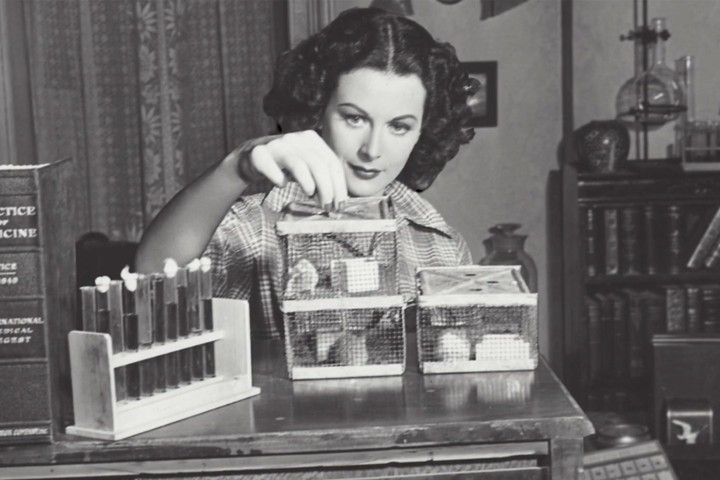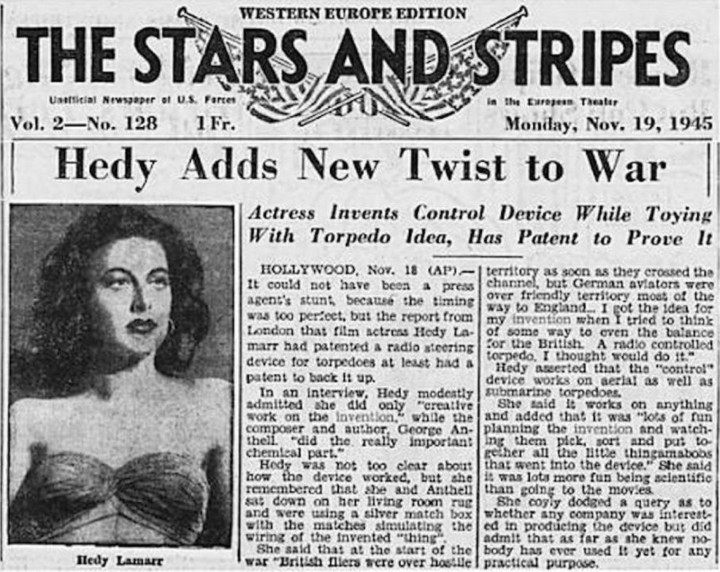If documentarian Alexandra Dean’s debut theatrical release falls short in some aspects, it’s not for lack of a fascinating subject. Bombshell: The Hedy Lamarr Story details the hidden world of one of early cinema’s most divisive and misunderstood figures, Austrian actress and unacknowledged inventor Hedy Lamarr. Dean’s expression of Lamarr’s narrative is, at times, disjointed to the point of distraction, but ultimately the facts of the matter overcome the inadequacies of Dean’s direction and provide a timely and compelling look at an unduly marginalized genius.
Lamarr, neé Kiesler, was born to a wealthy Viennese family and was, by her own account, an “enfant terrible.” A precocious child, young Hedy displayed an impressive intellect that was tragically overshadowed by her beauty, and inherited an affinity for science from her beloved father. It is this aspect of her dichotomous personality, her self-proclaimed knack for invention, that provides the most engaging aspects of Bombshell. Largely unbeknown to her peers and contemporaries until late in her life, Lamarr was responsible for the invention of a technique for encrypting radio transmissions known as “frequency hopping,” devised for use in Allied torpedoes during the early days of World War II and critical to modern cellphones. Lamarr’s patent, dismissed largely because of her status as a Hollywood sex symbol, sat unused for decades in a government file cabinet. She was never compensated for her work.
Dean’s film recounts Lamarr’s biographical backstory through her own words as well as through the anecdotal recollections of a number of notable filmmakers and film historians, running the gamut from Mel Brooks to TCM’s Robert Osborne. Osborne, billed here as a close friend of Lamarr, speaks of the star as a study in contradictions, a person both beholden to her public persona as a glamorous sex symbol and defiantly striving for acknowledgment for her intellectual prowess. The film details Lamarr’s early career scandal in the Czech exploitation movie Ecstasy, her troubled first marriage to a Nazi-sympathizing arms manufacturer, her introduction to Louis B. Meyer and subsequent work for MGM, her tumultuous home life and failed marriages, and her final days as an alienated recluse.
Throughout all of this exposition, Dean manages to bury the lead, devoting as much time to Lamarr’s late-in-life proclivity for plastic surgery as she does on the inventive mind that should have revitalized Lamarr’s image long after her screen career had ended. The film reads as though Dean is too close to her subject to adequately edit herself, and her directorial style is distinctly heavy-handed while contributing little to the story. Occasional examples of in-frame animation detract from archival footage and stills, and an overreliance on talking-head interviews harken back to Dean’s earlier work on made-for-TV docs.
Still, the narrative at the core of Bombshell is fascinating in its implications, providing a potent example of our society’s propensity to pigeonhole people, especially beautiful women, rather than allowing them the capacity to fully realize their true potential. While Dean’s documentary stumbles in its execution, Lamarr’s story more than merits any audience’s attention. Not Rated.
Now Playing at Grail Moviehouse.









What a poignant tale about a brilliant, talented, beautiful woman. The world is just too unjust to so many!